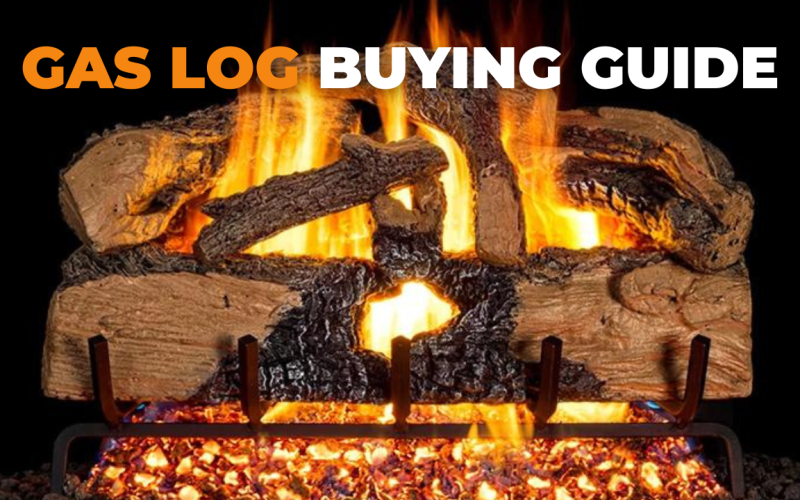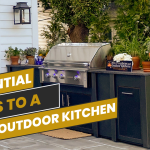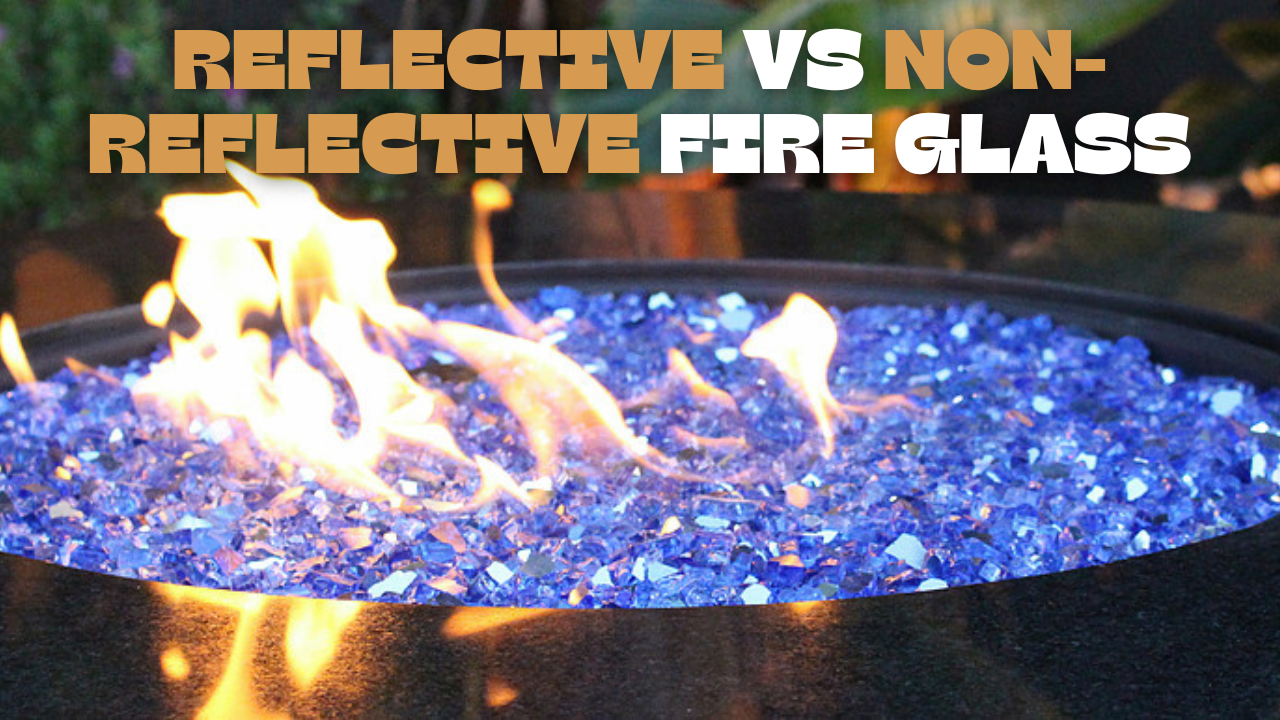Gas logs offer a convenient and efficient way to enjoy the warmth and ambiance of a traditional fireplace without the hassle of storing and hauling wood. Whether you’re upgrading an existing fireplace or installing a new heating source, choosing the right gas logs for your home requires careful consideration. In this comprehensive buying guide, we’ll walk you through everything you need to know to make an informed decision and select the best gas logs for your needs.
Built-In or Freestanding Gas Logs?

The first decision you’ll need to make when shopping for gas logs is whether you want built-in or freestanding options. Built-in gas logs are designed to be installed inside an existing fireplace, providing a seamless and attractive heating solution. These logs often offer a more realistic appearance and can be controlled using a remote or wall switch for added convenience. On the other hand, freestanding gas logs are standalone units that can be placed anywhere in your home. These logs are ideal for homes without a traditional fireplace or for those looking to add supplemental heat to a specific room. While they may not offer the same level of realism as built-in logs, freestanding options are versatile and easy to install.
When deciding between built-in and freestanding gas logs, consider factors like convenience, aesthetics, and space constraints.
Built-In Gas Logs:
-
- Installed within an existing fireplace, seamlessly integrating with your home’s decor.
-
- Often controlled via remote or wall switch for ease of use.
-
- Offer a realistic appearance, mimicking the charm of a traditional wood-burning fireplace.
-
- Ideal for homeowners seeking a permanent heating solution with a classic look.
Freestanding Gas Logs:
-
- Standalone units that can be placed anywhere in your home, offering versatility in placement.
-
- Great for homes without existing fireplaces or for adding supplemental heat to specific rooms.
-
- Typically easier to install compared to built-in options.
-
- May not provide the same level of realism as built-in logs but offer flexibility and convenience.
Vented vs. Vent-Free Gas Logs
Another important consideration is whether to opt for vented or vent-free gas logs. Vented gas logs are designed to mimic the look of a traditional wood-burning fireplace, complete with realistic flames and glowing embers. These logs require a chimney or flue to vent harmful combustion byproducts outside of your home. Vented gas logs offer a classic fireplace experience and are often preferred for their realistic appearance. On the other hand, vent-free gas logs are designed to burn cleanly and efficiently without the need for a chimney or flue. These logs are equipped with an oxygen depletion sensor (ODS) that automatically shuts off the gas supply if oxygen levels in the room become too low. Vent-free gas logs offer greater flexibility in terms of installation and are an excellent choice for homes without a chimney or flue.
When considering between vented and vent-free gas logs, it’s crucial to understand the differences in terms of safety, efficiency, and installation requirements.
Vented Gas Logs:
-
- Require a chimney or flue to vent combustion byproducts outside.
-
- Offer a more realistic flame appearance, akin to traditional wood-burning fires.
-
- Generally considered less efficient than vent-free logs since a significant amount of heat escapes through the chimney.
-
- Suitable for homeowners prioritizing ambiance and aesthetics over heating efficiency.
-
- Require professional installation to ensure proper venting and safety compliance.
Vent-Free Gas Logs:
-
- Designed to burn cleanly and efficiently without the need for venting.
-
- Ideal for homes without chimneys or for those seeking a more cost-effective heating solution.
-
- Offer a high level of heating efficiency since all heat stays within the room.
-
- Equipped with oxygen depletion sensors (ODS) for enhanced safety, automatically shutting off the gas supply if oxygen levels become too low.
-
- Provide flexibility in installation and can be easily added to most rooms with a gas line.
Liquid Propane Gas Heat and Natural Gas
When choosing gas logs, you’ll also need to decide between using liquid propane or natural gas as a heat source. Natural gas is a popular choice for homeowners with access to a municipal gas line, as it tends to be more affordable and readily available. However, if your home is not connected to a gas line, you may need to use liquid propane instead. Liquid propane is a portable and versatile fuel source that can be stored in tanks and delivered to your home as needed. While propane tends to be more expensive than natural gas, it offers greater flexibility in terms of installation and can be used in areas where natural gas is not available. Consider factors such as cost, availability, and convenience when choosing between natural gas and propane for your gas logs.
Liquid Propane Gas:
-
- Portable and versatile fuel source that can be stored in tanks and delivered to your home as needed.
-
- Ideal for homes without access to a municipal gas line.
-
- Offers flexibility in installation, allowing homeowners to use gas appliances even in remote areas.
-
- Generally more expensive than natural gas but can be a viable option when natural gas is not available.
-
- Requires regular refills of propane tanks, which may be inconvenient for some homeowners.
Natural Gas:
-
- Typically more affordable and readily available compared to liquid propane gas.
-
- Connected to a municipal gas line, eliminating the need for refills or storage tanks.
-
- Considered a cleaner burning fuel compared to other fossil fuels like coal or oil.
-
- Provides consistent and reliable heat for homes with access to a gas line.
-
- Requires professional installation and connection to the existing gas infrastructure in your home.
When deciding between liquid propane gas and natural gas for your gas logs, consider factors such as availability, cost, and convenience to determine which option best suits your needs.
General Fireplace Safety
Safety should always be a top priority when using gas logs in your home. Here are some general safety tips to keep in mind:
-
- Install carbon monoxide detectors: Gas appliances can produce carbon monoxide, a colorless and odorless gas that can be deadly if inhaled in high concentrations. Install carbon monoxide detectors near your gas logs to alert you to any potential leaks or buildup of carbon monoxide.
-
- Have your fireplace inspected regularly: Schedule annual inspections by a qualified technician to ensure that your gas logs are operating safely and efficiently. During the inspection, the technician will check for any leaks or malfunctions and make any necessary repairs.
-
- Keep flammable materials away from the fireplace: Avoid placing flammable materials such as curtains, furniture, or decorations near your gas logs, as they can pose a fire hazard. Be sure to follow the manufacturer’s guidelines for safe clearance distances around the fireplace.
-
- Use a fireplace screen: Invest in a sturdy fireplace screen to prevent sparks and embers from escaping the fireplace and causing damage to your home or injury to your loved ones.
-
- Never leave the fireplace unattended: Always supervise your gas logs when they are in use and never leave them unattended. Make sure to turn off the gas supply and extinguish the flames before leaving the room or going to bed.
-
- Keep children and pets away from the fireplace: Teach children and pets to stay away from the fireplace when it is in use to prevent accidents and injuries. Consider installing a safety gate or barrier to restrict access to the fireplace area.
-
- Follow the manufacturer’s instructions: Read and follow the manufacturer’s instructions for installing, operating, and maintaining your gas logs to ensure safe and proper use.
By following these general safety guidelines, you can enjoy the warmth and beauty of your gas logs with peace of mind.
BTU Needed to Heat a Room With an 8-ft and 10-ft Ceiling
| Room Size (Square Feet) | BTU Needed for 8-ft (Approximate) | BTU Needed for 10-ft (Approximate) |
|---|---|---|
| Up to 200 | 5,000 | 6,000 |
| 200 - 300 | 7,000 | 9,000 |
| 300 - 400 | 9,000 | 12,000 |
| 400 - 500 | 10,000 | 15,000 |
| 500 - 600 | 14,000 | 18,000 |
| 600 - 700 | 18,000 | 21,000 |
| 800 - 900 | 20,000 | 24,000 |
| 900 - 1000 | 22,000 | 27,000 |








